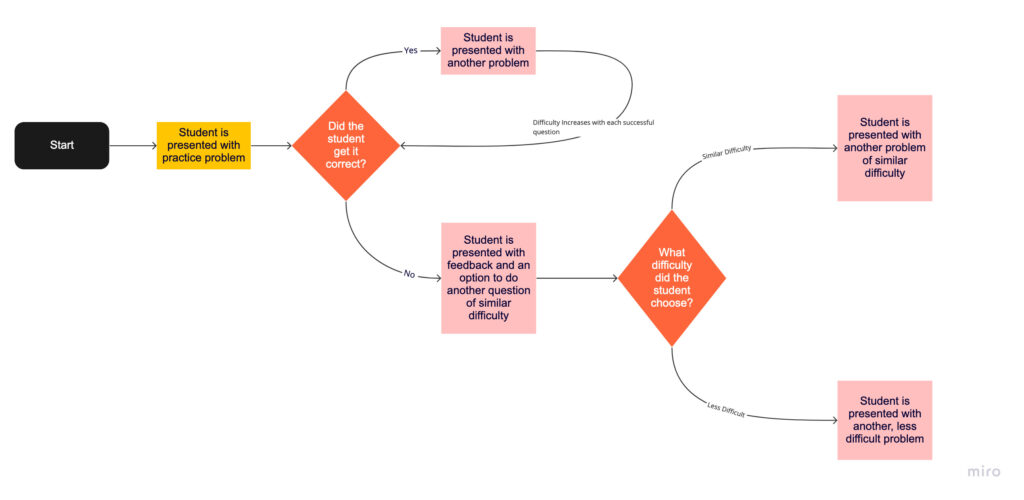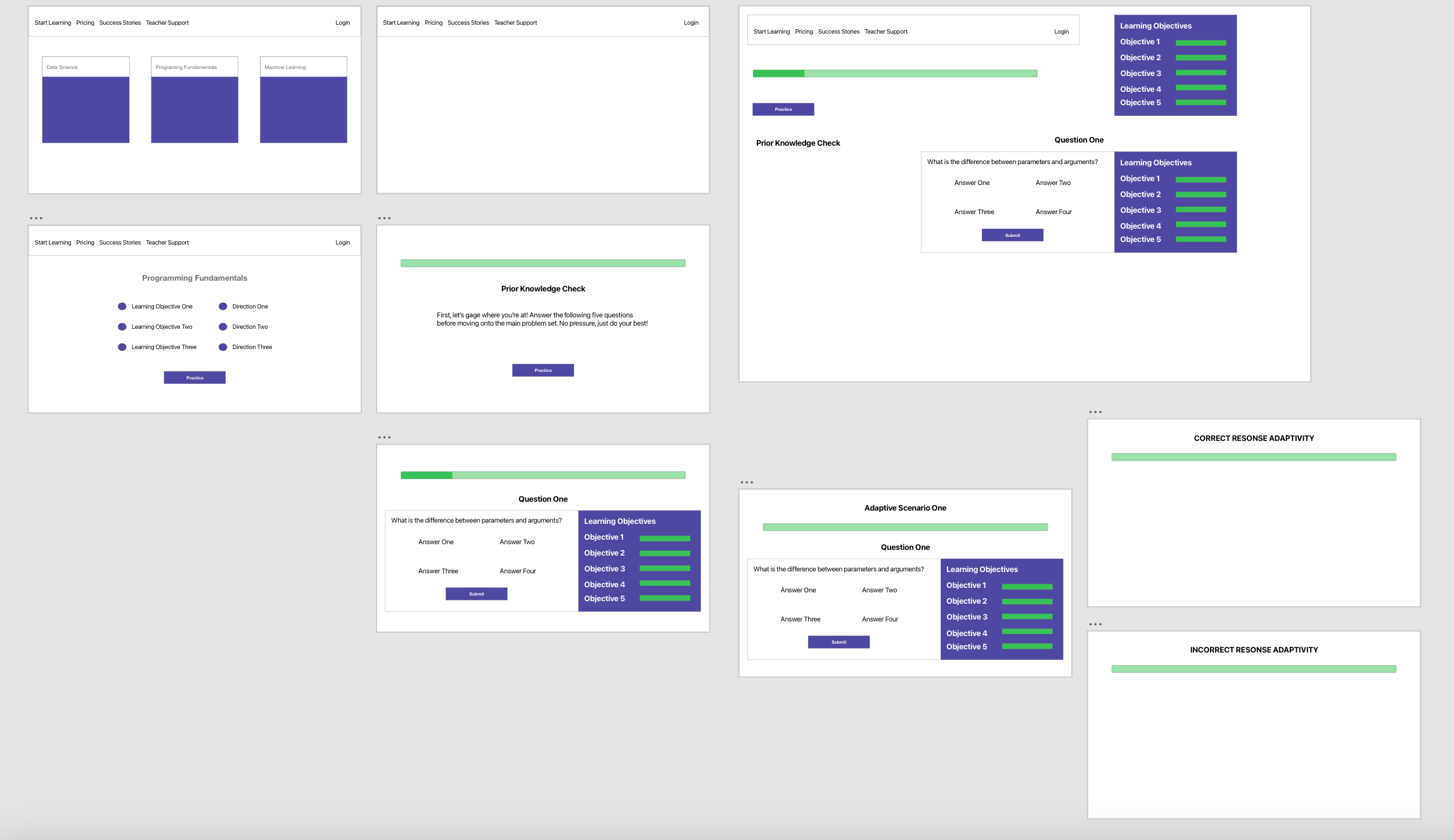
Theory of Change Model
Creating quality standards and policy to address the workforce demands for tech skills is complicated and multi-level. It takes collaboration between policy makers, teachers, and students for Computer Science education to be implement effectively. On the right, I address this with a theory of change model that shows the connections between levels. I created this as a prototype for strategies that I believe will address the issued that I defined in my Define post.

CS Tutoring Software
This is a logic flowchart that I made in Miro to model a Computer Science Tutoring software that I am developing. It will use in-task analytics to adapt difficulty and feedback based on the student’s progress through the tutoring session.

Adobe XD Prototype
This prototype is the next iteration of the program that I designed in Adobe XD. I focused more on the functionality and UX of the program rather than the UI and design which I will address in further iterations. This prototype highlights the adaptability of the program to user progress. The students have constant access to how they are doing in the tutoring session through the Learning Objective Progress Bars. Question difficulty changes based on their performance; higher achievers are presented with more challenging questions, and lower achievers are presented with words of encouragement, worked examples, and problem deconstruction. Once the student has completed the training session, they will be presented with a summary of their session which will highlight areas they know well and areas for improvement. Lastly, this report will be sent to their instructor for review as well.